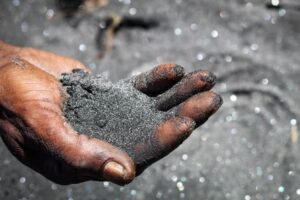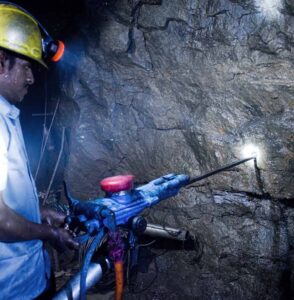Sri Lanka’s Graphene Revolution: Bridging the Gap Between Potential and Reality

Graphene itself is not visible to the naked eye because it is just one atom thick and appears as a nearly transparent, two-dimensional sheet. In practical applications, it is often observed in the form of a thin, dark, or reflective film when transferred onto surfaces, or as a component of composite materials where its structure enhances the overall properties of the material. Comonly it comes in powder form.
Powdered graphene consists of tiny flakes or particles of graphene and is often used in various applications, including composites, coatings, and batteries. The powder is typically black or dark gray and can vary in size depending on the method of production and processing.
Sri Lanka, renowned as the world’s sole commercial producer of vein graphite—a premium form of graphite with a remarkable carbon content of 97–99.5%—has been making waves in the international materials science community. The country’s vein graphite is considered the highest purity form available, presenting a golden opportunity for value-added applications like graphene. However, despite the immense potential, the transition from graphite to graphene, and the broader economic benefits it could bring, remains a complex and challenging journey.

The Promise of Graphene
Graphene, a single layer of carbon atoms arranged in a hexagonal lattice, is celebrated for its extraordinary properties. It boasts exceptional electrical and thermal conductivity, making it a promising candidate for advanced electronics, renewable energy systems, and high-performance batteries. Applications range from enhancing energy storage in supercapacitors to revolutionizing smart textiles and wearable technologies. Given that Sri Lankan vein graphite is the ideal raw material for producing high-quality graphene, the prospects for Sri Lanka’s economic uplift through graphene commercialization are significant.
SLINTEC’s Breakthrough
Sri Lanka Institute of Nanotechnology (SLINTEC) has achieved a significant milestone with a patented method to process graphene from vein graphite at one of the lowest processing costs globally. This innovation positions Sri Lanka at the forefront of graphene production. The technology developed by SLINTEC and its commercial arm, Ceylon Graphene Technologies (CGT), is poised to open doors for Sri Lanka in the global graphene market, potentially driving substantial foreign exchange earnings.
Challenges to Commercialization
Despite these advancements, the road to graphene’s commercial viability is fraught with obstacles. While the theoretical advantages of graphene batteries—such as faster charging times, longer lifespans, and higher energy densities—are well-documented, practical implementation remains a challenge. Current graphene battery technologies, though promising, face hurdles in scalability and cost-effectiveness. Companies like Appear Inc. have made strides, but widespread adoption is still a distant goal.
Moreover, while graphene batteries offer substantial benefits over traditional lithium-ion batteries, their commercial breakthrough will require overcoming significant production and cost barriers. Until these issues are addressed, graphene batteries may not achieve mainstream status, despite their potential.

Strategic Partnerships and Future Prospects
Sri Lanka’s strategic approach to overcoming these hurdles involves forging global partnerships and focusing on developing value-added products. The collaboration between LOLC Advance Technologies Ltd. and HydroGraph Clean Power Inc. exemplifies this strategy. The joint venture, supported by SLINTEC, aims to commercialize a graphene blend with enhanced battery performance, potentially addressing some of the scalability and cost issues.
The introduction of the US Inflation Reduction Act (IRA) also presents an opportunity for Sri Lankan graphite. The IRA’s emphasis on non-Chinese graphite could bolster demand for Sri Lankan vein graphite, especially as it is certified environmentally sustainable with a “green” label. This shift could solidify Sri Lanka’s position in the global market and increase the attractiveness of its graphene products.
Looking Ahead
In summary, while Sri Lanka is well-positioned to lead in the graphene market due to its high-purity vein graphite and cutting-edge processing technology, translating this potential into reality remains complex. The promise of graphene is significant, yet practical challenges must be addressed before it can revolutionize industries. Continued investment in research, development, and strategic international partnerships will be crucial for Sri Lanka to bridge the gap between its current position and the full realization of graphene’s economic benefits.
The path forward involves not only overcoming technical and economic barriers but also leveraging Sri Lanka’s unique advantages in vein graphite to drive innovation and growth. If successful, Sri Lanka could emerge as a global leader in graphene technology, transforming its economic landscape and contributing to technological advancements worldwide.







